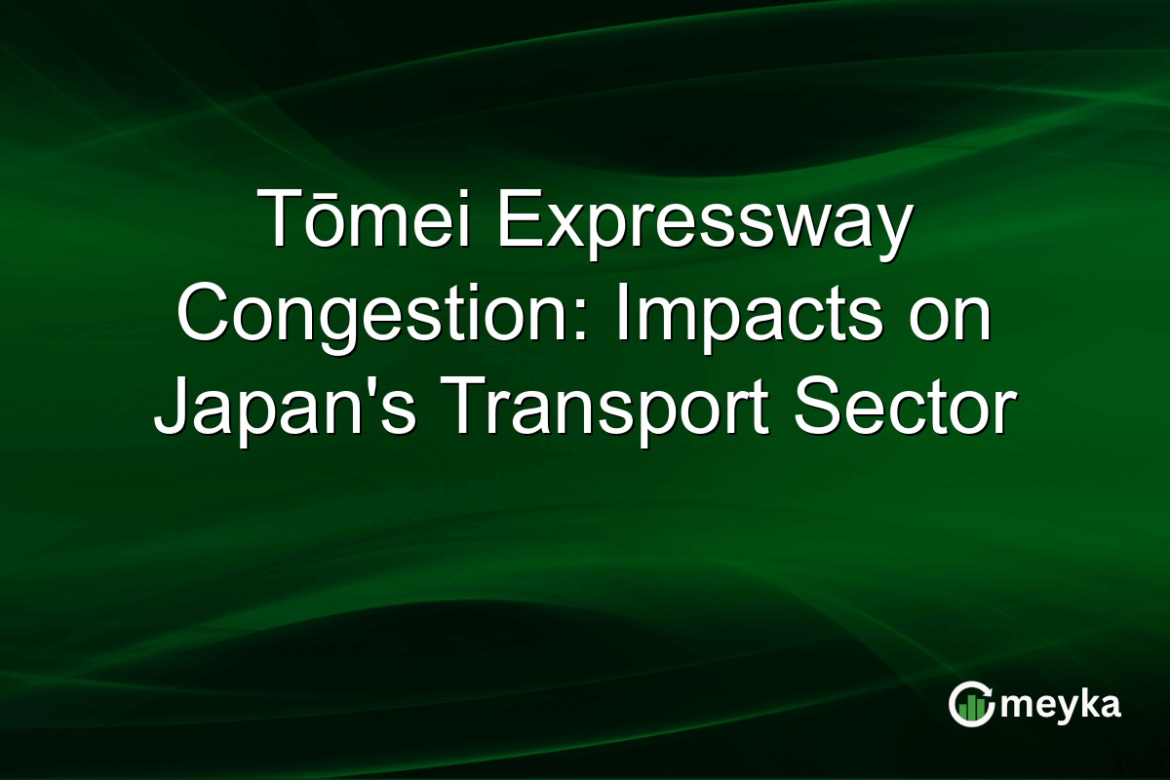On November 23, significant congestion on the Tōmei Expressway highlights major concerns for Japan’s transport sector. A reported 100% increase in traffic volume has raised alarms about the economic impacts on logistics and transportation. Understanding the ripple effects of this surge, especially on travel and shipping costs, is crucial for businesses relying on timely deliveries across Japan.
Traffic Impact and Challenges on the Tōmei Expressway
The Tōmei Expressway, vital for connecting Tokyo with Nagoya and Osaka, is currently facing formidable congestion issues. Data reveals a staggering 100% increase in traffic, predominantly affecting freight movement and daily commutes. This congestion has led to delays, escalating travel times by up to 50%. Such disruptions not only affect individual commuters but also play a significant role in the broader logistics framework of Japan. Industry experts suggest that this trend, if left unchecked, could set a concerning precedent for future transport dynamics. For further insights, check East Nippon Expressway Company updates on social media.
Economic Consequences of Transport Delays
The economic consequences of the Tōmei Expressway congestion are profound, particularly for sectors reliant on precise logistics. Industries such as electronics and automotive, which depend on just-in-time delivery systems, are facing increased shipping costs and potential production delays. For instance, delivery costs have risen by approximately 20%. This heightens the financial strain on businesses that must absorb these costs to remain competitive. Addressing these logistical hurdles is vital for maintaining Japan’s economic stability amid global supply chain challenges.
Infrastructure Solutions: Long-term Planning
Japan’s highway infrastructure must adapt to accommodate growing traffic demands. Proposals range from expanding existing lanes to implementing smart traffic management systems. These solutions aim to alleviate congestion while boosting efficiency for all road users. Ongoing discussions emphasize the need for sustainable investment in infrastructure, which could significantly reduce bottlenecks and ensure smoother traffic flow. By prioritizing these enhancements, Japan can strengthen its transport network and economic resilience.
Final Thoughts
The current situation on the Tōmei Expressway serves as a wake-up call for Japan’s transport policies. Addressing the immediate congestion issues is crucial not just for improving traffic flow but for sustaining Japan’s economic growth. Long-term infrastructure investments are essential to reduce similar challenges in the future. By focusing on strategic expansion and smart technologies, Japan can mitigate the economic consequences and maintain its position in the global market.
FAQs
What causes congestion on the Tōmei Expressway?
The congestion is primarily due to increased traffic volume, surpassing the highway’s capacity. Contributing factors include high freight demand and commuter travel, which spike during peak hours.
How does Tōmei Expressway congestion affect businesses?
Businesses relying on just-in-time deliveries face higher shipping costs and delays. This impacts industries like electronics and automotive, which need timely logistics to maintain operations.
What infrastructure improvements are proposed for Japan’s highways?
Proposals include expanding highway lanes and using smart traffic management systems. These measures aim to reduce congestion and improve overall transport efficiency across Japan’s highway networks.
Disclaimer:
The content shared by Meyka AI PTY LTD is solely for research and informational purposes.
Meyka is not a financial advisory service, and the information provided should not be considered investment or trading advice.


AloJapan.com